With the southernmost wine regions in the world, the New Zealand grape harvest is in full swing with some vineyards almost completely through vintage (late ripening varieties like riesling will be picked throughout May) and many vignerons are breathing a sigh of relief, with ferments finished and the anxiety levels subsiding.
It is difficult to articulate the physical and intellectual tensions of vintage simply because of the sheer complexity of harvesting grapes and the myriad of irreversible decisions that have to be made and executed with an unnerving degree of immediacy, with the outcome translucently illustrated – in the bottle.
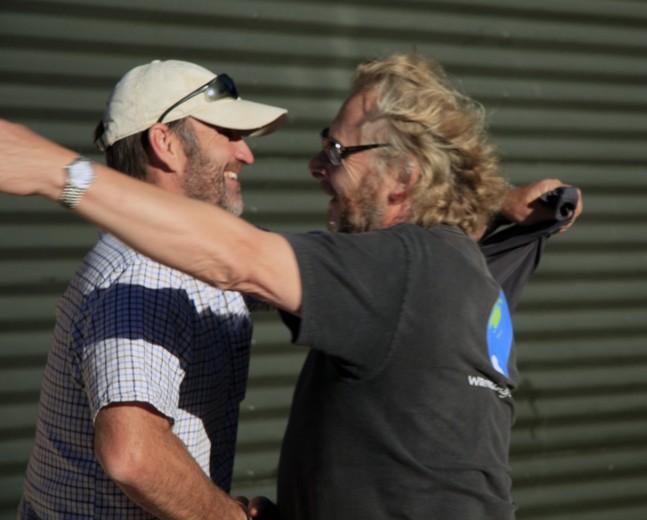
Felton Road end of vintage - a very jubilent (relieved) Nigel Greening, proprietor of Felton Road in Central Otago
Through no fault of their own, the demands and tribulations of vintage are somewhat lost on many wine consumers, either simply oblivious to the gruelling physical and mental labour involved, or innocently seeking credence in vintage reports that can be misleading in their generalisations, sometimes doing more harm the good.
For example, if you believed what some of the wine press have been reporting to date, the New Zealand vintage, by all accounts, should be a right-off with deluges of rain and practically no summer at all; in parts. And yet there are some areas of the country, and specifically Central Otago, that were largely unaffected by rains due to the region being surrounded by mountains and protected from unseasonal inclement weather and subsequently a more Continental climate.
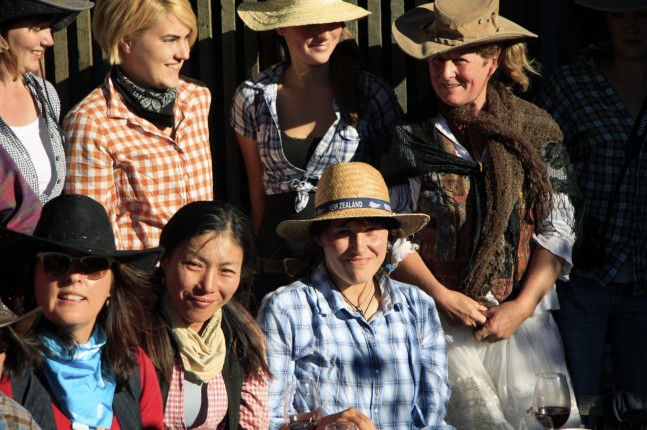
Felton Road end of vintage - female power
And I am already getting reports from Martinborough that although there is an undeniable consensus they had a miserable summer, Kai Schubert of Schubert winery reports, “Actually there is more feeling like summer than autumn at present… 2012 also seems to have amazing colour and great tannin structure… probably due to all the wind we had.” More from Kai soon, who suspects the vintage will be brilliant, “with similarities with the 2004 vintage which also was cold and rainy but produced some fantastic wines with the true transparency of pinot noir!”
Perhaps people also do not realise the vast distances between the wine regions in New Zealand, spanning 40º south from North Auckland to 45º south to Queenstown or a distance of 1000 kilometres. And whilst much of New Zealand’s wine regions are directly affected by the maritime climate, there is much diversity in the prevailing winds and many facets of vineyard site aspects and terroir that add to this heterogeneous and intricate picture.
As for the vintage toil itself, anyone who has partaken in a small vineyards social outing of picking grapes for the day, or even just a morning, will vouch for the hard yakka involved with all fantasies of owning a vineyard and bucolic life fast disappearing. That said, most artisan wineries have a ‘work hard, play hard’ ethic and there is much esprit de corps amongst the vintage crew and a good deal of comparative tasting of wines and higher learning – of the craft.
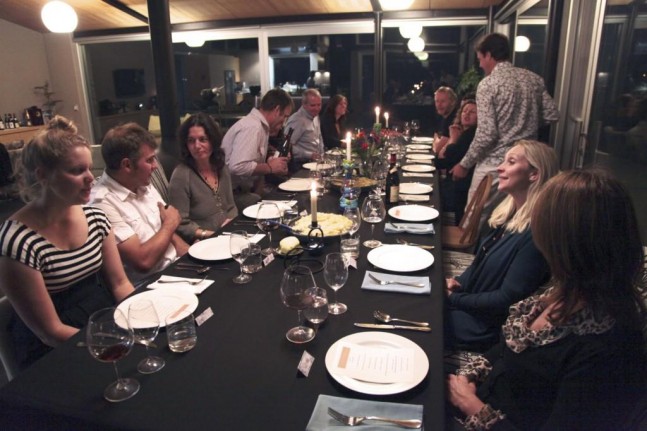
Felton Road end of winemaking dinner
Winemakers and winery crew have a somewhat more harrowing time than those out in the vineyard, as when the grapes come in there’s no possibility of delay and the whites grapes have to pressed and reds de-stemmed (maybe a bit of whole bunch) then headed for the fermentation tanks. Sometimes it can be an all-night affair, or at least crazy hours keeping a vigil over ferments and plunging down caps with little sleep for weeks, and hardly time to shave – see Blair Walter sporting his annual vintage growth.
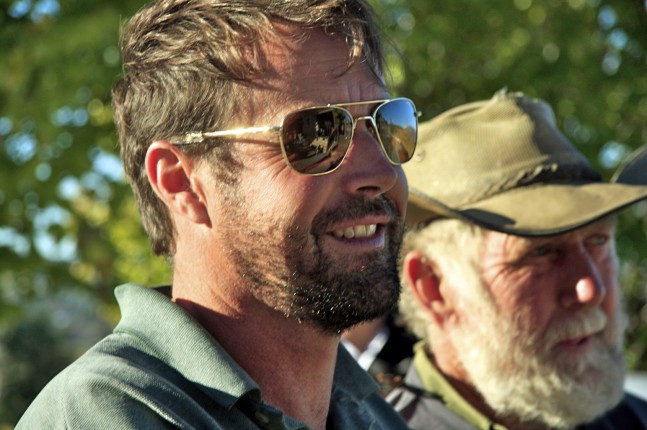
Felton Road end of vintage party - winemaker Blair Walter with annual harvest growth
Obviously there is cause for celebration once the harvest is complete with all the grapes are in; not only a climax of all the years hard work in the vineyard, but a sense of relief that a herculean task is done and the crew deservedly shares in the spirit of achievement and teamwork.
With the aim of bringing you some of the spirit and geniality with the end of harvest and also a brief summation of the vintage, I asked Nigel Greening at Felton Road in Central Otago if he would send some pictures of their end of harvest party, to which he included their end of winemaking dinner as well along with the menu, and rightly of Bacchanalian proportions.
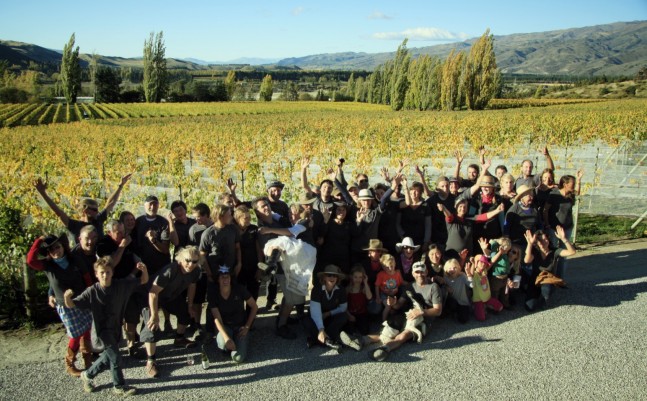
Felton Road end of vintage party - the entire crew
And I quote, “We are very excited by the wines, which are showing amazingly, despite just being 3 weeks or so old. It has every indication of being a benchmark in quality for us.”
He went on to say, “Central Otago in general has done well with vintage, the continental climate protecting it from the rain which has pummelled a lot of New Zealand. We had a uniquely early vintage at Felton Road in that we seemed to pick around 2 weeks earlier than most other wineries around us. This is something that has never happened before (we are often first to pick, but only by a day or so). We have no idea why we ripened so much earlier.”
So, there you go, one of the most lauded New Zealand vignerons declares the 2012 vintage their best to date and altruistically shares the spirit of harvest with us.
And the moral of the story; every vineyard has its own ‘vintage’ story and if you really want to get a sense of the characteristics of the year and the resulting wines, you need to connect with the vineyard direct. Vintage charts and reports have way too much generalisation to be of any real use.
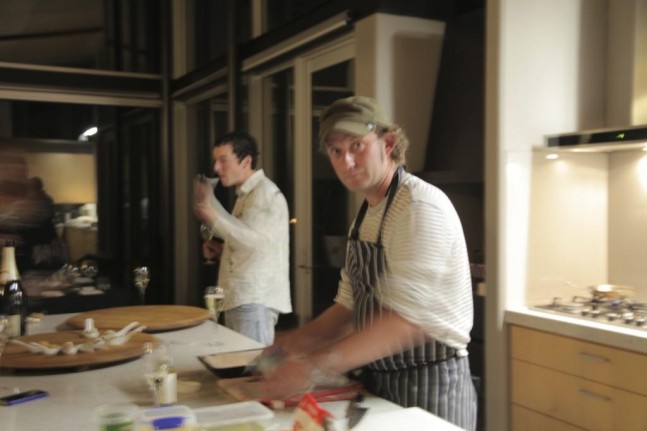
Felton Road end of winemaking dinner - chef
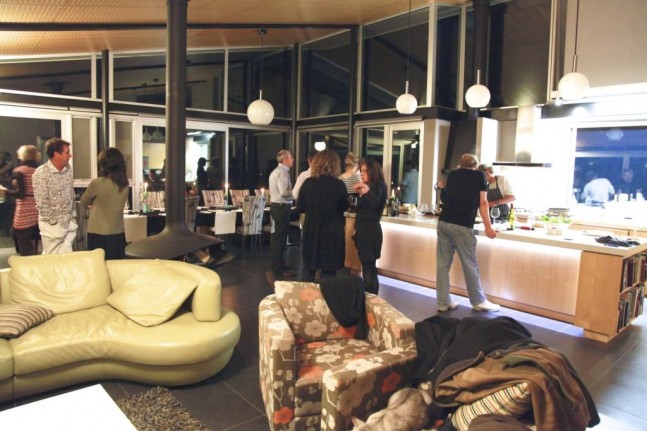
Felton Road end of winemaking dinner
Vintage 2012
Gilles Thebault
Bluff oysters, Goma-wakame jelly
Softshell crab sushi Nobu style: Tobiko, chives
Scallops, ginger and carrot puree
Poached crayfish, crayfish oil Mayo
Quail tempura, smoked garlic foam
Rabbit beignet, Jerusalem artichoke, Watercress, bacon crumb
Slow roast wild boar shoulder baked apples, savoy cabbage, mashed potato
Pinot sorbet, panna cotta, berry coulis
Apple and pear tart, Fine custard
|
|
Tweet |





No comments to 2012 Felton Road end of harvest party and end of winemaking dinner | Comments Feed
No comments yet
The comments are closed.